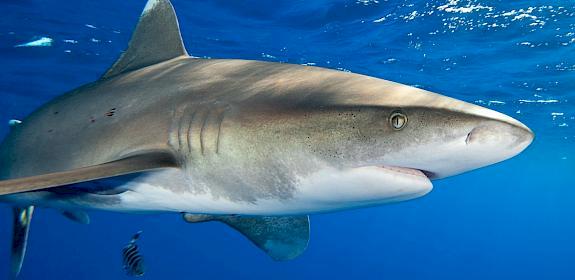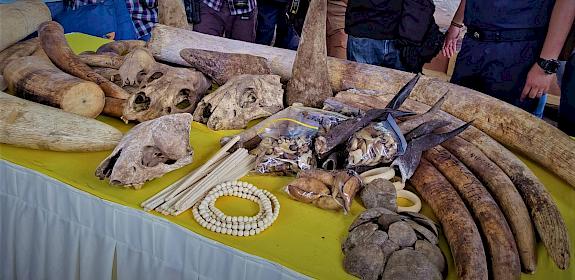New recruits bring TRAFFIC’s Super Sniffers total to 56
New Delhi, India, 19th December 2017—Last week, 13 wildlife sniffer dogs completed their training at the National Training Centre for Dogs (NTCD), BSF Academy, Tekanpur Gwalior, bringing the combined total of such dogs deployed within India helping curb illegal wildlife trade to 56.
The training, organized by TRAFFIC with support from WWF-India, of the 13 German Shepherd and Belgian Malinios dogs and their handlers began in April this year when the dogs were puppies, aged between 6–9 months.
The dogs and their handlers qualified following a passing out ceremony organized on 15th December 2017 at the NTCD, where they had the opportunity to showcase their skills.
Of the thirteen new wildlife sniffer dog squads, West Bengal has deployed three; Sikkim, Uttarakhand and Uttar Pradesh have both deployed two; and the Andaman and Nicobar Islands, Assam, Odisha and Kerala have each deployed one. This is the first time that the Andaman and Nicobar Islands, Uttar Pradesh, Sikkim and Odisha have deployed wildlife sniffer dogs to help curb wildlife crime.
TRAFFIC’s wildlife sniffer dogs, popularly known as “Super Sniffers”, have been trained to sniff out Tiger and leopard skins, bones and other body parts, along with bear bile and Red Sanders wood. Special training has also been provided to the sniffer dog deployed in the State of Sikkim to track Yarsagumba Cordyceps sinensis, a heavily traded wildlife contraband in the region. Yarsagumba, also known as Keera Ghaas (insect-grass), is a parasitic fungus of caterpillars and is found in the higher reaches of Arunachal Pradesh and, more recently, in the Garhwal and Kumaon Himalayas in India. It is collected in large numbers and smuggled through Nepal to markets in China for use in traditional medicines.
Dr G. S. Nag, CVO, NTCD Commanding Officer said, “NTCD recognizes wildlife crime as a major threat to India’s wildlife and considers deployment of wildlife sniffer dog squads as an adequate response. Therefore, NTCD has partnered with TRAFFIC to help train wildlife sniffer dogs in India. The training of these 13 dogs was designed after thorough deliberations with officials from TRAFFIC and from the various wildlife sanctuaries and tiger reserves, alongside incorporating findings from field studies into the modus operandi of wildlife criminals.”
Enforcement agencies across India have robust experience of using and handling sniffer dogs and TRAFFIC is pleased to see recognition of their use for conducting seizures and curbing wildlife crime. Those Super Sniffers already deployed have been successful in conducting seizures and nabbing poachers, bringing laurels to TRAFFIC’s wildlife sniffer dog training programme in India. We are hopeful that this programme can be institutionalized within the enforcement arsenal used to help provide a concerted response to the challenges emerging from wildlife poaching and illegal wildlife trade.
Dr Saket Badola, IFS, Head of TRAFFIC in IndiaTRAFFIC’s Super Sniffers have been used successfully in nearly 200 wildlife seizure cases, suspect arrests and recovery of body parts. The latter have included Tiger and leopard skins and bones, bear bile, ivory, Indian Star Tortoises, live birds, porcupines, pangolin scales, deer antlers, skins and meat, along with snares, traps and weapons.
The wildlife sniffer dog training programme was initiated in India by TRAFFIC and WWF-India in 2008. The response to the programme has been overwhelming, with 17 States now deploying wildlife sniffer dog squads.




